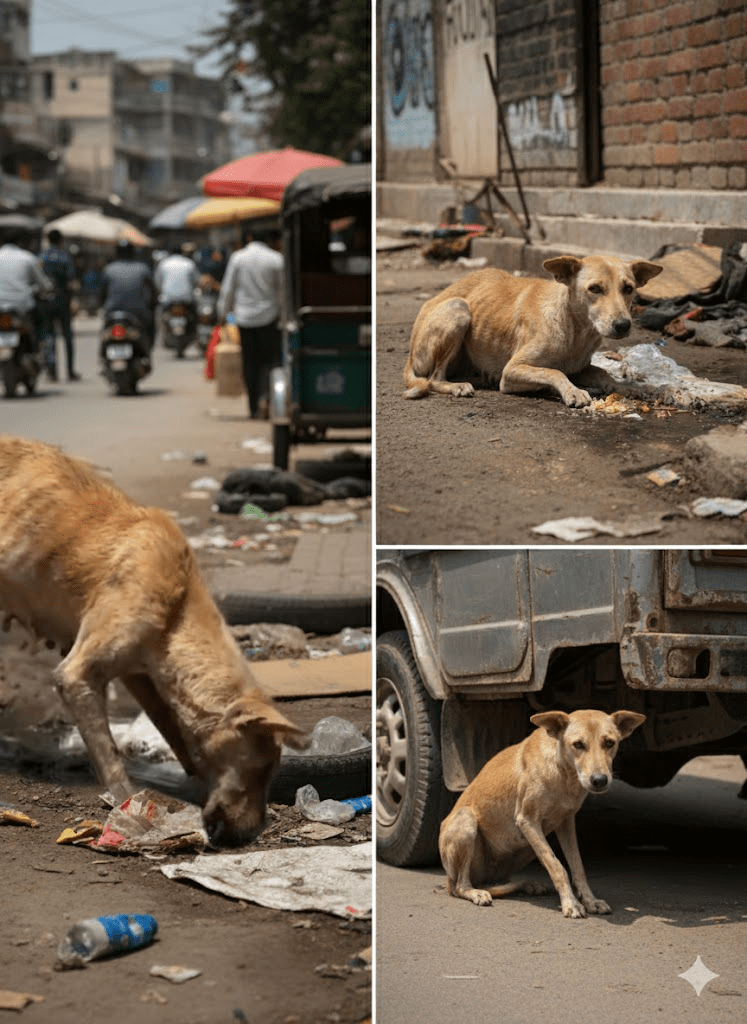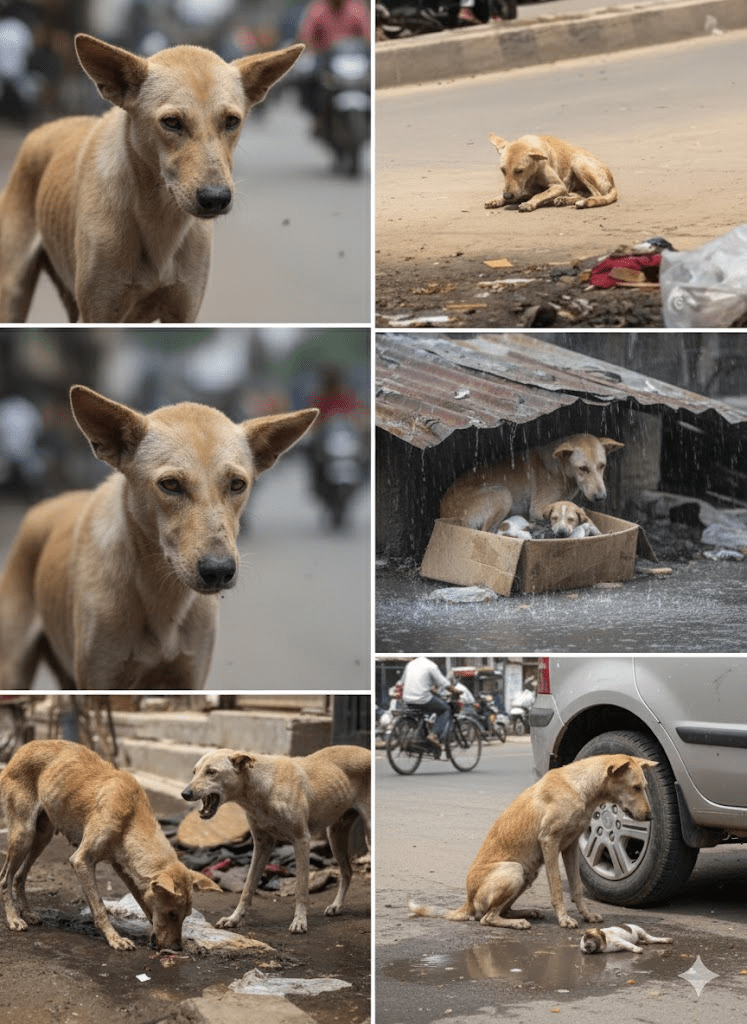The image before us is a poignant, unedited snapshot of a reality far too common in many parts of the world: the daily struggle for survival faced by street dogs. It’s a scene that immediately elicits a complex mix of emotions – empathy, concern, and perhaps a stark awareness of the disparity in life. We see a dog, emaciated and clearly unwell, desperately trying to find sustenance in what appears to be discarded scraps on a dirty street. Its ribs are visible, a testament to prolonged hunger, and its posture speaks of weariness and vulnerability. The environment is harsh; the ground is grimy, littered with refuse, and the faint blur of a passing vehicle in the background hints at the indifferent rush of human life continuing around this creature’s silent plight. This single image, devoid of embellishment or artistic staging, cuts through the noise to highlight the raw, unfettered existence of these animals, inviting us to look beyond the immediate visual and ponder the broader implications of such widespread neglect. It’s a silent plea, a stark reminder of the countless forgotten lives that navigate our urban landscapes, often unseen and unheard, enduring a constant battle against hunger, disease, and the elements. The dog’s very act of survival, stooping to consume whatever meager offerings it can find, is a powerful and heart-wrenching narrative in itself, compelling us to consider the ethical dimensions of our co-existence with these sentient beings.

Beyond the immediate emotional response, this image serves as a powerful illustration of the profound challenges faced by stray animal populations globally. These animals, often born into a life on the streets or abandoned by their owners, are forced to navigate an unforgiving environment where every day is a test of resilience. Their existence is characterized by a constant search for food, water, and shelter, often in direct competition with other animals and in areas frequented by humans who may view them with indifference, fear, or even hostility. The lack of reliable food sources means that many street dogs suffer from chronic malnutrition, leading to visible emaciation, weakened immune systems, and increased susceptibility to disease. Their diets are often composed of discarded scraps, as depicted in the image, which can be contaminated, harmful, or simply insufficient to meet their nutritional needs. This precarious diet contributes significantly to their poor health and shortened lifespans compared to domesticated animals.

Malnutrition is just one facet of the difficulties faced by street dogs. They are also highly vulnerable to a myriad of diseases, many of which are preventable through vaccination but are rampant in unvaccinated populations. Conditions such as rabies, distemper, parvovirus, and various parasitic infections are widespread and often fatal for these animals. Without access to veterinary care, minor injuries can become severe infections, and treatable illnesses can quickly escalate into life-threatening conditions. The dog in the image, with its visible physical distress, likely suffers from a combination of these health issues, exacerbated by its poor nutritional state. Furthermore, street dogs are exposed to harsh environmental elements, enduring extreme temperatures, rain, and other weather conditions without adequate shelter. They often seek refuge in dangerous places like under vehicles or in abandoned buildings, where they are still at risk of accidents, injury, or further exposure.







